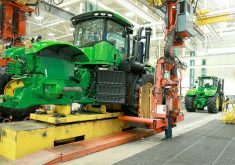Have you been surveyed lately? Our readers often tell us they’re subjected to all kinds of telephone and written surveys as researchers and input suppliers explore farmers’ needs and desires.
So don’t worry. This isn’t another survey.
Rather, it’s a bunch of survey results about farmers in the United States. It might be a nice change to read about other farmers’ responses rather than answering questions yourself.
These are statistics from a nationwide survey of American farmers that is now being analyzed at Purdue University.
Read Also

Budget seen as fairly solid, but worrying cracks appear
The reaction from the agriculture industry to prime minister Mark Carney’s first budget handed down November 4th has been largely positive.
Purdue does a major survey of more than 2,500 farmers every five years to gauge farm management practices, buying behaviour and brand preferences, among other things. Assistant professor Corinne Alexander provided a sneak preview of the 2008 results at a recent meeting of the National Agri-Marketing Association.
Respondents were divided into mid-sized, typical commercial and large in terms of acreage or livestock numbers.
Researchers found that overall expected growth rates in all three sector sizes are slowing on American farms.
In crops, this is a reflection of lower commodity prices compared to 2003. In hogs and cattle, Alexander speculated that lower growth expectations are a result of hog industry consolidation and recent drought in major cattle producing states.
Among wheat, barley and canola growers asked what percentage of growth they expected in the next five years, seven percent was the average growth figure offered for 2008, compared to 16 percent in 2003 and nine percent in 1998.
In the cattle sector, seven percent was again the average growth figure projected in the 2008 survey, compared to 38 percent in 2003 and 23 percent in 1998. An expectation of tougher times in the cattle business is evident.
The greatest management challenge in the next five years, according to American farmers? Achieving profitability is at the top, as it was in 2003 and in 1998. We’ll speculate that the answer would be the same up here, north of the U.S. border.
Because of her audience, Alexander also discussed statistics on farmers’ preferred sources of agricultural information. Regardless of farm size, the survey showed general farm publications are considered the most useful information sources.
Age was not a factor in that assessment; farmers of all ages gave farm papers the highest rating among media for usefulness.
Farmers with higher levels of education tended to put greater emphasis on website and e-mail information, but they still like their newspapers, said Alexander.
We hope that same preference is the case in Canada. We’ll certainly do our best to deserve it.














